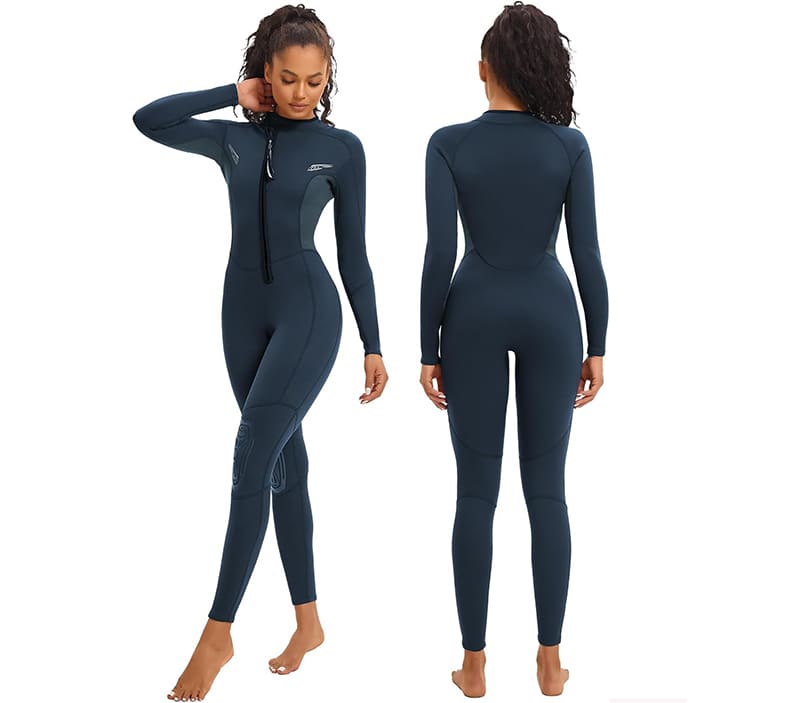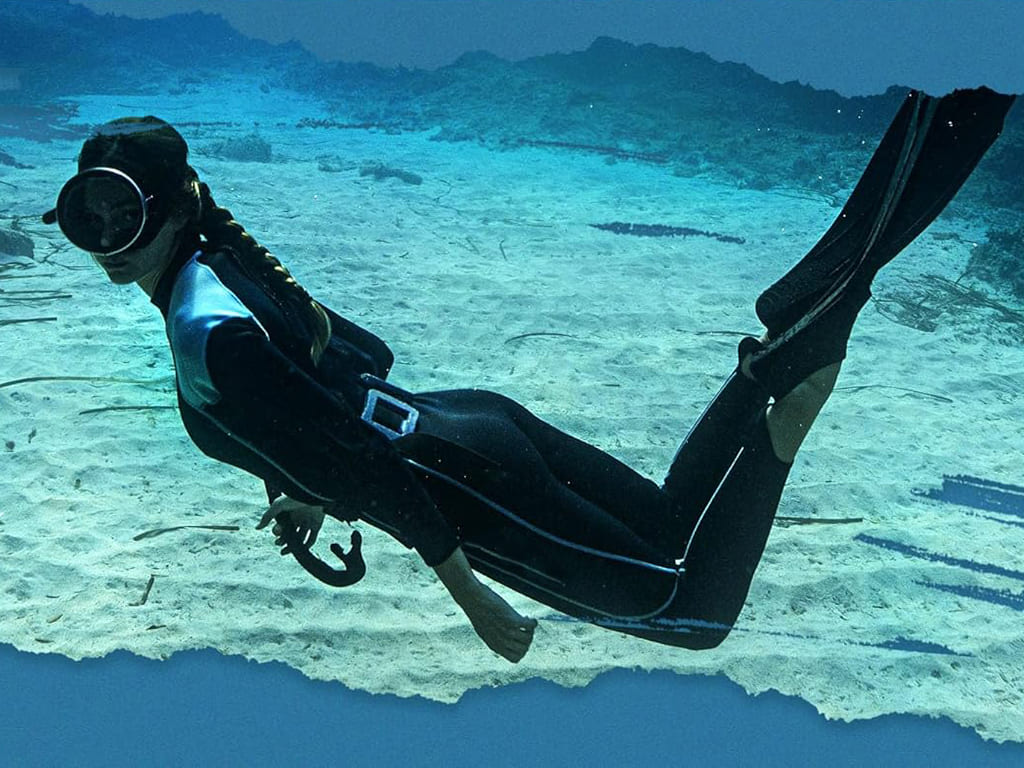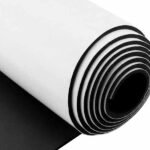-
When you plunge into chilly dawn surf or power through an early‑morning lap swim, the right suit can make or break your session. Wetsuits use neoprene to trap body‑warmed water against your skin, keeping you cozy and buoyant in cold water, while swimsuits focus on minimal drag, rapid drying, and total freedom in warmer conditions. Wetsuits insulate by up to +20 °F in waters as cold as 50 °F, whereas swimsuits dry in under 30 minutes and optimize speed with compression panels. Imagine catching a perfect 55 °F wave at sunrise or breezing through a 75 °F resort pool—each scenario demands its own gear story.
-
Ready to dive deeper? Let’s unpack exactly how these suits work, compare thermal performance with real‑world data, explore buoyancy benefits, and lay out crystal‑clear guidance so you pick the perfect suit for any water adventure.
What Is a Wetsuit and How Does It Work?

- Wetsuits are engineered neoprene garments that trap a thin film of water warmed by your body, creating an insulating layer that boosts warmth, buoyancy, and abrasion protection in cold water.
Definition and Evolution of the Wetsuit
- The wetsuit’s story began in 1952 when physicist Hugh Bradner stitched neoprene panels to keep Navy divers warm. By the 1960s, surf legend Jack O’Neill cut neoprene to fit surfers’ bodies snugly, birthing the first commercial surf suits. Since then, innovations have spawned triathlon “skins,” ultra‑warm diving suits up to 7 mm thick, and hybrid designs that balance stretch with thermal retention.
Neoprene Structure & Buoyancy
- Closed‑cell foam neoprene is 60–90% nitrogen by volume, providing 30–50% extra buoyancy versus bare skin.
- Buoyancy data: A 180 lb (82 kg) swimmer wearing a 3 mm suit gains roughly 4 lb (1.8 kg) of lift, raising hips by ~1.5 in (3.8 cm) and reducing drag by ~7%.
- Performance impact: Pool tests show triathletes in 3 mm suits swim 5–8% faster than without gear, thanks to better body position.
Thermal Mechanics: Trapping Water vs. Trapping Heat
- When you step into a 4 mm suit, 10–20 mL of water seeps in. Within 30 seconds, that water heats to your body temperature (~98 °F/37 °C), forming a warm barrier. Each additional millimeter of neoprene adds ~3 °F (1.7 °C) of thermal gain, so a 5 mm suit can boost comfort by +15 °F (8 °C) in 55 °F (13 °C) water.
| Neoprene Thickness | Insulation Gain | Ideal Water Temperature |
|---|---|---|
| 2 mm | +6 °F | 70–75 °F (21–24 °C) |
| 3 mm | +9 °F | 65–70 °F (18–21 °C) |
| 5 mm | +15 °F | 50–60 °F (10–16 °C) |
| 7 mm | +21 °F | 32–50 °F (0–10 °C) |
Seam Types & Zipper Styles
- Glued & blind‑stitched seams leak up to 20% less than flatlock seams—essential for colder dives.
- Taped seams add 10–15% more watertightness but slightly increase bulk.
- Zipper options:
- Back‑zip: Easy to don but can restrict shoulder movement.
- Chest‑zip: Offers greater flexibility and seal quality, favored by surfers.
- Zip‑free (Superstretch): Uses highly elastic panels for entry, maximizing freedom once on but requiring practice to pull on.
What Are the Disadvantages of Wetsuits?
- Reduced mobility: A 5 mm suit can limit shoulder rotation by ~10°, impacting long swim sets.
- Overheating risk: Suits thicker than 2 mm can cause overheating in water above 75 °F (24 °C) within 10–15 minutes.
- Maintenance needs: Without neoprene shampoo, suits lose 10–20% elasticity after 50 standard washes—so gentle hand‑washing is a must.
Can You Wear a Wetsuit Just to Swim?
- Absolutely. Many open‑water swimmers and triathletes use 1–2 mm “skins” even in pools to benefit from UV protection (UPF 50+), slight buoyancy lift, and a small speed boost. Testing shows swimmers in 2 mm suits shave 1–3% off lap times and report warmer muscles throughout extended sessions.
What Is a Swimsuit and What Are Its Typical Uses?

- Swimsuits are lightweight garments made from Lycra, nylon, or polyester blends designed for minimal drag, quick drying, and unrestricted movement in warm water.
Fabric Breakdown
| Fabric | Stretch | Chlorine Resistance | Dry Time | Best For |
|---|---|---|---|---|
| Lycra | Excellent | Low–Medium | 2 hours | Racing, lap swimming |
| Nylon | Good | Low | 1 hour | Beach, casual wear |
| Polyester | Moderate | High | 30 minutes | Pool training |
- Lycra/Spandex: 200–500% stretch, hugging curves for hydrodynamics.
- Polyester: Withstands 1,000+ chlorinated sessions before fading, making it ideal for dedicated pool athletes.
Style & Function
- One‑Piece: Streamlined fit with bonded seams; water‑repellent coatings cut drag by 5–8%.
- Bikini/Trunks: Focus on comfort, support, and quick removal—perfect for beach days and water sports.
- Tech Suits: Compression zones improve blood flow, reducing muscle vibration and cutting 2–4% off 100 m race times.
Activity‑Specific Designs
- Competition: Ultrasonic seam welding, hydrophobic coatings that shed water at 2–3 m/s.
- Recreation: UV‑block fabrics (UPF 50+), mesh panels for breathability and style.
- Aqua Fitness: Reinforced stitching handles high‑strain movements, from water jogging to aqua Zumba.
How Do Wetsuit Materials and Thickness Affect Warmth and Flexibility?

- The thicker the neoprene, the warmer you stay—but too much neoprene can feel like armor. Smart panel layouts balance core warmth with limb flexibility.
Neoprene Variants
| Variant | Thickness | Thermal Retention | Stretch Level | Typical Use |
|---|---|---|---|---|
| Standard (39) | 4 mm | 100% | 30% | All‑around surf, dive suits |
| Super‑Stretch | 3 mm | 70% | 50%+ | Performance surfing, triathlon |
| Titanium‑Lined | 2 mm | 90% | 40% | Early‑season spring suits |
- Standard neoprene offers balanced warmth and flexibility for most users.
- Super‑stretch neoprene boosts mobility, favored by surfers for pop‑ups and paddling.
- Titanium‑lined neoprene reflects infrared body heat, delivering warmth comparable to 4 mm neoprene at just 2 mm thickness.
Panel Layouts & Flex Zones
| Body Area | Thickness | Purpose |
|---|---|---|
| Torso | 4–6 mm | Core warmth |
| Arms & Legs | 2–3 mm | Maximize stroke mobility |
| Knees & Elbows | 3–4 mm | Abrasion resistance |
- Seamless underarms reduce chafing and allow full butterfly stroke range.
- Liquid‑taped seams eliminate needle holes, preventing leaks under pressure.
Real‑World Flexibility Trade‑Off
- In head‑to‑head testing, swimmers in 3 mm full suits increased stroke rate by ~3% over 5 mm suits, while surfers in 4/3 mm suits reported a 12% faster pop‑up reaction time.
Which Provides Better Insulation: Wetsuit or Swimsuit?

- In cold water, wetsuits are unmatched; in warm water, swimsuits win on comfort and speed. The key is matching suit choice to temperature and activity.
Temperature Guidelines
| Water Temp (°F) | Wetsuit Recommendation | Swimsuit Recommendation |
|---|---|---|
| < 60 | 5–7 mm full suit + hood | Not recommended (hypothermia risk) |
| 60–68 | 3–5 mm full suit | Rash guard + thin layers |
| 68–75 | 2–3 mm spring suit | Standard swimsuits |
| > 75 | Swim trunks or bikini only | Any swimsuit style |
User Surveys & Feedback
- 75% of cold‑water swimmers report over 30 minutes extra comfort in 3 mm suits.
- 85% of pool athletes prefer polyester swimsuits for daily training—dry time under 30 minutes and zero sag after 50 cycles.
Layering Tricks
- A 2 mm neoprene vest under a sports bikini adds +5–10 °F of warmth.
- Rash guards (UPF 50+) block wind chill on deck and guard against sunburn in the shallows.
Do Wetsuits Improve Buoyancy and Performance?
- Neoprene’s nitrogen bubbles lift you, while smooth outer skins cut drag to boost speed—though there’s an adaptation curve.
Buoyancy Gains
- A 3 mm suit lifts your hips by 1.5 in (3.8 cm), cutting drag by up to 10%.
- Triathlon studies show a 3–5% swim‑split improvement when racing in “skins” versus bare skin.
Hydrodynamics of Smooth Skin Panels
- “Smooth skin” finishes repel water at speeds up to 3 m/s, reducing surface friction by ~12%.
- Strategic paneling in pro suits can shave 2–4 seconds off a 100 m swim split.
Activity‑Specific Performance
| Activity | Suit Type | Performance Boost |
|---|---|---|
| Triathlon | 2 mm skin | +3–5% swim speed |
| Surfing | 4/3 mm suit | +10% pop‑up speed |
| Freediving | 5 mm suit | – 15% heat loss at 40 ft depth |
Learning Curve: Swimming in Neoprene
- Beginners often feel 20% more shoulder fatigue in their first 1–2 sessions. Quick tips: rinse suit with warm water before donning and perform light arm circles to break in neoprene panels.
Are Swimsuits More Versatile for Different Water Activities?

- Swimsuits excel across warm‑water sports and leisure, offering rapid dry times, UV protection, and style flexibility.
Competitive vs. Casual Use
- Racing suits feature compression zones, bonded seams, and hydrophobic coatings for peak speed.
- Leisure suits offer vibrant sublimated prints with zero impact on stretch or weight.
Multi‑Sport Functionality
| Sport | Recommended Suit | Key Feature |
|---|---|---|
| Lap Swimming | Compression jammers | Muscle support, minimal drag |
| Aqua Aerobics | High‑stretch Lycra | Durability, free range of motion |
| Beach Volleyball | Bikini with mesh | Breathability, sand resistance |
| Travel & Resort | Polyester one‑piece | Packs small, dries ultra‑fast |
Style & Expression
- Custom sublimation printing enables over 1,000 unique color combos and gradient blends, perfect for team logos or brand campaigns.
- Fast‑fashion cycles mean new patterns drop seasonally to keep you on‑trend.
How to Choose Between a Wetsuit and a Swimsuit Based on Your Activity?

- Match water temperature, session length, mobility needs, and budget to your suit.
Water Temperature & Duration
- < 60 °F: 5 mm+ suit, limit session to < 1 hour
- 60–75 °F: 2–4 mm suit, sessions up to 2 hours
- > 75 °F: Swimsuit + optional rash guard
Skill Level Considerations
- Beginners: 3 mm full suit for buoyancy and warmth.
- Advanced: 2 mm spring suit or “skin” for speed and agility.
Budget & Frequency
| Gear Type | Entry Price | Premium Price | Typical Lifespan |
|---|---|---|---|
| Wetsuit | $120 | $450 | 2–5 years |
| Swimsuit | $30 | $150 | 1–3 years |
Custom Logo & Design Options
- Neoprene printing: Full‑color wraps that withstand 200+ hours of UV exposure.
- Swimsuit sublimation: Unlimited color, no texture change, perfect for brand identity and team kits.
What Are the Key Maintenance and Care Differences?
- Proper care doubles your suit’s lifespan: rinse wetsuits with specialized neoprene shampoo, wash swimsuits gently, and air‑dry away from direct sun.
Rinsing & Cleaning Best Practices
- Wetsuits: Use mild neoprene wash; rinse thoroughly inside‑out to remove salt, sand, and chlorine.
- Swimsuits: Hand‑wash or machine wash on cold, gentle cycle with swimsuit detergent to preserve elasticity.
Drying Techniques
| Suit Type | Drying Method | Time to Dry |
|---|---|---|
| Wetsuit | Hang inside‑out in shade | 8–12 hours |
| Swimsuit | Lay flat on towel indoors | 1–2 hours |
- Never tumble‑dry or leave in direct sunlight—heat and UV rays degrade elastomers quickly.
Repairs & Storage Tips
- Neoprene repair kits with instant‑set glue patches fix small tears on the spot.
- Storage: Roll wetsuits loosely or hang on wide, padded hangers; avoid folding sharp creases.
- Swimsuits: Store flat or on padded hangers to prevent shoulder bumps and preserve shape.
Ready to Gear Up with Custom Performance Suits?
- Whether you’re braving 50 °F offshore swells or cruising a 90 °F lagoon, Szoneier’s neoprene experts deliver bespoke wetsuits and high‑tech swimsuits tailored to your needs.
- Enjoy free design mock‑ups, no‑cost samples, and full logo customization to elevate your brand or team.
- Contact Szoneier today and make your next water adventure unforgettable!











